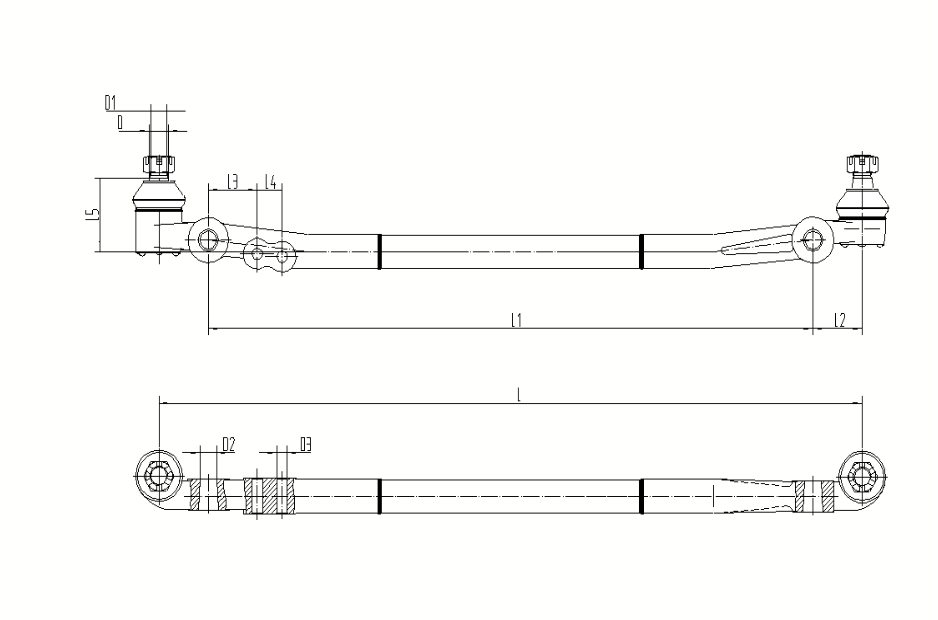
The tie rod is an essential component of the vehicle’s steering mechanism, directly impacting the stability of steering, the safety of operation, and the lifespan of the tires. There are two main types of tie rods: the steering tie rod and the transverse tie rod. The steering tie rod is responsible for transmitting the movement of the steering rocker arm to the steering arm, allowing control of the wheels. The transverse tie rod connects the left and right steering arms, ensuring synchronized motion between the two front wheels and adjusting the toe-in.
Components of the Automotive Steering Control System:
Material: Constructed using high-quality steel to ensure strength and durability, achieving reliable performance and a long service life.
Safety: Manufactured in accordance with IATF 16949 ISO 9001 production standards to ensure safety and reliability.
Design: The rod’s bending is precision-crafted using an automatic bending machine. The ball head thread is meticulously designed for a tight fit with the rod’s thread.
Function: Transmits the steering input from the steering wheel to the steering knuckle, enabling accurate and responsive steering. The tie rod connects the steering rack to the steering knuckle.
Load Capacity: Capable of withstanding high loads and forces, ensuring safe and reliable operation even under demanding driving conditions.
Lubrication: Pre-lubricated with high-quality automotive-specific lubricants or available with lubrication options to achieve smooth and consistent motion, reducing wear and extending the lifespan of the transverse tie rod end.
Installation: Easy to install, ensuring a secure and stable connection with the steering system.